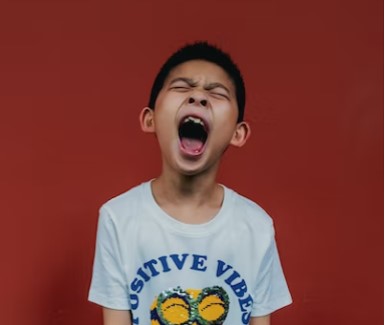This article on managing student behavior is the second piece in a series of three about developing positive environments in schools. The first part covered keys to creating a positive learning atmosphere. The third part discusses building a resilient staff.
Recently, I met with an assistant head of school at a private school in the St. Louis area to discuss challenging behaviors in the classroom. This leader shared that risk behaviors aren’t prevalent at his school. School fights, he said, are a rarity. The challenge he has been seeing, however, is helping teachers to respond positively and proactively when anxiety or defensiveness affects the classroom environment.

When one person escalates in the presence of another, it’s human nature that both individuals often end up with heightened emotions. If I were to raise my voice at a friend or colleague, for instance, that person might find it appropriate or even necessary to raise her or his voice too. Consequently, if students raise their voices, use sarcasm, refuse to participate in activities or ask challenging questions, teachers sometimes react as human nature suggests they should. They — as humans — sometimes respond to escalated student behavior with escalated behavior of their own. Unfortunately, this only exacerbates the situation and often results in office referrals and disciplinary consequences.
Recognizing how helpful it is to have other strategies and solutions for challenging behaviors in the classroom, we at the Crisis Prevention Institute recommend a person-centered approach that can help educators in all environments (public and private, general education and special education) whether they’re in classrooms, elsewhere on campus or beyond.
Training in a person-centered approach fosters greater confidence in the classroom and helps with techniques to manage disruptive behavior. Restraining a student should only be used as a last resort as it does little to foster a positive school climate that supports student and teacher success.
A positive school environment is founded on effective and proactive de-escalation, skills that are more imperative than ever following the pandemic. A CPI survey conducted at the start of the 2022-23 school year found that student trauma, teacher stress, mental health issues and increased anxiety are top areas of concern. No two students are alike, so meeting them where they are against that kind of backdrop becomes more realistic when you know you have tools and strategies at your disposal.
Here are three tips for managing challenging student behavior in the classroom.
1. Know what you do (and don’t) want
It sounds simple, but knowing what you do and don’t want in your classroom lays the groundwork for making the most of your time with your students. Setting clear expectations creates the consistency that underpins a safe learning environment. It drives everything from how your classroom is arranged to planning how you’ll respond in both best- and worst-case scenarios.
Start by identifying your expectations for student behavior, and communicate those expectations to your students using a small number of rules they can use as guidance. Post those rules in the classroom, and periodically remind students why they exist.
Stay on top of compliance so that consequences — the positive as well as the negative — are applied fairly. This is where the physical arrangement of your classroom comes into play. You should be able to easily see all your students at all times to monitor their work and behavior.
Lastly, and maybe most importantly, don’t make rules you’re unwilling or unable to consistently enforce.
2. Have a plan for misbehavior
Misbehavior can provoke an emotional response from even the most experienced teachers. Having strategies that align with the knowledge that our behavior influences our students’ behaviors can help you keep your composure and redirect the disruptions to keep your students focused on what matters: learning.
For example, our three-step approach begins with not taking the bait. I know that’s often easier said than done, but remember that losing control of your emotions often leads to losing control of your classroom. A quick emotional response can diminish your credibility and authority and will rub off on the disruptor, as well as every other student in the room.
Challenging student behavior has an impact on instruction time for all your students, so next, strive to redirect the disruption to get back on task. That includes addressing discipline at a better time in order to avoid derailing your lesson plans any further.
If that doesn’t work, move on to step three: Disrupt the disruptor with silence. Taking a moment or two to carefully consider your response can throw a student who is expecting a rapid back-and-forth exchange.
3. Meet students where they are
To meet our students where they are, we must recognize that students don’t always come to school with the fundamental skills, abilities or support they need to be the best versions of themselves. Those gaps, and the challenging behavior that follows, are often driven by trauma. By age 16, more than two-thirds of children will have experienced a potentially traumatic event. That’s on top of a pandemic that has left many students with feelings of chronic unpredictability and isolation.
A trauma-sensitive approach begins with educator training to develop automatic and consistent responses when a student experiences an outburst. Use observation and interaction to learn the patterns that may spark trauma reactivity. The quicker you recognize them, the better you can intervene.
Don’t be afraid to dissect your perspective either, especially if you find yourself getting stuck thinking your students are acting out intentionally. Remember that for many children who are struggling with trauma, relationships can be a form of a battleground they must cross to get to healing. Consider incorporating occupational therapy techniques into your curriculum to make it easier. When used early in the self-regulation cycle, sensory strategies can make the difference between a meltdown and meaningful learning.
Finally, focus on connection over compliance. Punishment instead of understanding simply hurts and perpetuates trauma, which does little to prevent future crises. Instead, strive to support and champion students who are struggling to make sense of their feelings and reactions, especially in the moments when their strengths are less evident.
At its core, misbehavior is an expression of needs and emotions. As adults, we must remember that self-regulation is a developmental skill like walking, talking and reading. Approaching your relationship with your students with understanding, empathy and positive guidance while utilizing a behavior toolkit like the one above will lead to greater success and happiness in the classroom.
Kevin Mabie, Ed.D., is a global professional instructor at the Crisis Prevention Institute with over two decades of experience as a teacher and principal. His work with CPI and the National School Reform Faculty has allowed him to work with hundreds of educators and act on his mission to positively affect those working in schools today. CPI’s survey at the beginning of the 2022-23 school year looked at key concerns related to school climate.
Opinions expressed by SmartBrief contributors are their own.
_________________________
Subscribe to SmartBrief’s FREE email ASCD newsletter to see the latest hot topics in education. It’s among SmartBrief’s more than 250 industry-focused newsletters.
